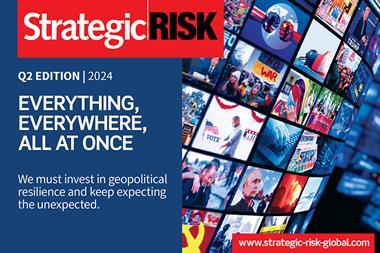Too many organisations are operating in the dark, unable to clearly see the exposures they face. Adrien Norulak, head of risk analytics, at Swiss Re Corporate Solutions explores how better data collection, analysis and communication can help companies better manage their mitigation and insurance solutions.
To successfully mitigate or transfer risks, companies first need to understand and quantify them. However, problems with the collection and analysis of underlying data means many firms are struggling to get a holistic picture of their exposures.
This problem is compounded by a lack of communication, meaning that departments are often working in siloes and the company does not have a single source of data. Exposures are frequently miscalculated, leaving firms under and over-insured or unable to make sensible decisions about mitigation, transfer or retention of risk.

Adrien Norulak, head of risk analytics, at Swiss Re Corporate Solutions, says: “Many departments need to communicate, and data needs to connect. For example, a business needs to know how much revenue is linked to a location and see how easily production can be shifted in order to estimate potential business interruption from a flood or fire event.”
Getting this granular understanding, which can then be shared with brokers, captives, insurers, and regulators, is mission critical, as it allows risk managers to prioritise mitigation measures. The C-suite is laser-focused on value creation, and risk professionals need to speak the board’s language. Data and analysis can help.
”The risk or captive manager needs to prioritise those mitigation efforts that will have the highest return on investment”
Norulak explains: “Companies, of course, don’t have unlimited budgets and risk management competes with all other departments. Often, we see firms channelling their investments into customer-facing / revenue-boosting activities. Therefore, the risk or captive manager needs to prioritise those mitigation efforts that will have the highest return on investment – for instance by safeguarding revenue, improving risk quality and hence getting better rates.”
The captive or insurance manager can then use this data and third-party insight to calculate the estimated total cost of risk (TCoR). This in turn allows a business to decide which portions can be absorbed by the balance sheet, which parts go to the captive, and what lands with the insurer or reinsurer.
To help businesses better understand the threats they face, Swiss Re Corporate Solutions has developed its Risk Data & Services (RDS) platform. The neutral platform pulls together not just data and insights from within Swiss Re, but also from trusted third-parties, such as EigenRisk, GDELT Project, ICEYE and the World Bank. This then allows companies to build a digital twin of their physical assets - gaining insight on:
- Location data
- Asset values
- Building properties
- Losses
- Policies
Norulak says: “Clients appreciate the insights we bring because it helps them consider aspects they might have not seen before. For instance, when we show them how many locations do not have a correct latitude/longitude or do not have a business interruption value.
”Many also have gaps or errors around building characteristics, such as which building code has been applied, the number of floors, structure type etc. When there are gaps, insurers apply an average value, and companies end up paying for that uncertainty.”
“The core goal of a risk manager is to keep the light on and protect the business, production, assets, employees and of course reputation.”
However, he says that the improved data provided by RDS gives companies an additional depth of information to identify the most vulnerable assets and therefore increase the impact of risk management.
Norulak concludes: “The core goal of a risk manager is to keep the light on and protect the business, production, assets, employees and of course reputation. Better data, insights and communication helps them to achieve this goal.”



















